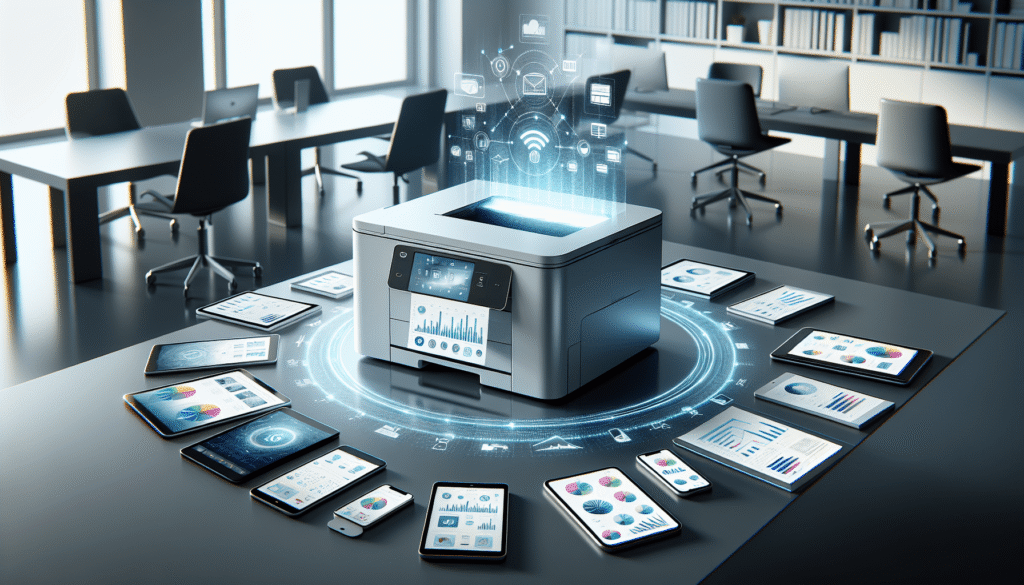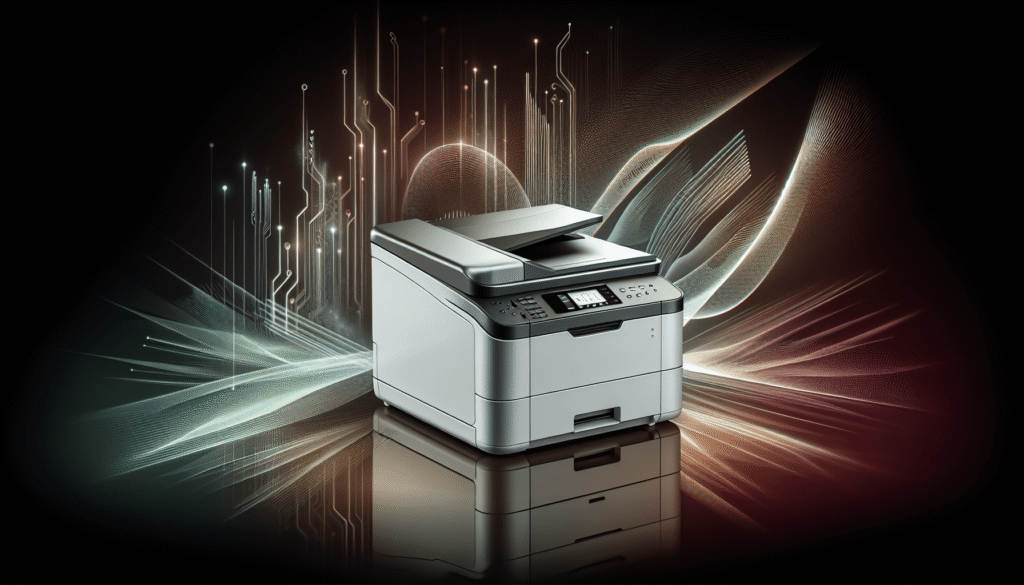Have you ever found yourself tangled in a mess of cables at the office, desperately trying to print an important document on time? If you’re like me, you understand the struggle of dealing with traditional printing setups, which often feel less like a seamless workflow and more like a test of patience. However, a quiet revolution is reshaping how we approach office tasks—wireless printing. It’s as if someone gifted all of us with an extra cup of coffee in the morning by making things just a bit easier and more efficient.

The Dawn of Wireless Printing
A Shift in Office Dynamics
Remember the time when printing involved complex setups, including connecting cables and ensuring the right drivers were installed? Those days are slowly becoming extinct. With the emergence of wireless printing technology, offices are witnessing a significant shift in dynamics. The liberation from physical connections has sparked a new era in office workflows, offering us the flexibility and mobility we never knew we needed.
Understanding Wireless Printing
What exactly is wireless printing? In essence, it’s a method of sending print jobs to a printer without the need for direct physical connections. Imagine sending a print command straight from your smartphone during a meeting, and voila! The document is printed before you even leave the room. It’s like magic, only it’s not—it’s advanced technology simplifying our everyday tasks.
Advantages of Wireless Printing
Enhanced Convenience and Flexibility
Wireless printing adds a layer of convenience that traditional printing could never offer. We aren’t tied down anymore! You can initiate printing from anywhere within the office, whether lounging in the break room or preparing for a presentation in the conference room. No more running to your desk just to hit a button—every device connected to the network becomes your control panel.
Reducing Clutter and Enhancing Aesthetics
Cables, cables everywhere. The bane of an organized office setup. Wireless printing eliminates this clutter, resulting in not just more organized spaces but also aesthetically pleasing ones. Imagine an office with clean desks and sleek, cable-free zones. It’s not just about looks; it’s about creating an environment conducive to productivity and clarity.
Boosting Productivity
Anyone who’s ever wrestled with a printer knows the pang of frustration and wasted time. Wireless printing saves time, which directly translates to increased productivity. Employees can print documents faster, spend less time troubleshooting printing issues, and focus on what actually matters—their work. The ease of use simply ends up boosting the morale and efficiency of the entire team.

How Wireless Printing Works
Network Connectivity and Protocols
Delving into the technical bit—wireless printers use Wi-Fi, Bluetooth, or infrared technologies. Most offices utilize Wi-Fi networks to connect printers with devices. This connection employs standard protocols such as AirPrint, Google Cloud Print, and Wi-Fi Direct to ensure devices can communicate with printers efficiently. It’s all about jumping on the existing network, much like your smartphone does when connecting to the office Wi-Fi.
The Role of Cloud Printing
Ever heard of cloud printing? This technology allows printing over the internet, erasing geographical boundaries. Whether you’re in the office or on a business trip across the country, send your documents to print as if you were still at your desk. Cloud printing services like Google Cloud Print (though discontinued, similar services are rising) have transformed the act of printing into a global, seamless affair.
Addressing Security Concerns
Ensuring Secure Connections
While the benefits are numerous, the advent of wireless technology introduces security concerns. How do we keep our documents safe from prying eyes? Secure Wi-Fi networks, encrypted communications, and secured cloud services are the backbone of safe wireless printing. Utilizing these measures ensures that sensitive documents are only accessible to those with permission.
Managing Access and Permissions
It’s crucial, especially in larger organizations, to manage who can access the wireless printing facilities. Printer management software allows administrators to set permissions, ensuring that only authorized individuals can print or access specific printers. This helps keep a tight rein on sensitive information and prevents misuse or overuse of company resources.
The Impact on Office Workflow
Streamlining Processes
By now, it’s clear wireless printing doesn’t just change how we print—it transforms our workflow. By simplifying the printing process, teams can enjoy streamlined operations. Collaboration becomes easier when physical constraints are removed, paving the way for more spontaneous and creative interactions among colleagues.
Supporting Remote and Mobile Work
The beauty of wireless printing supports the increasing trend of remote and mobile work. Employees working from home or off-site can connect to the office printer network with ease. This ability ensures that workflows remain uninterrupted regardless of physical location. It’s like bringing the office along, without actually having to bring anything physical.
The Future of Wireless Printing
Integration with Smart Technologies
What does the future hold for wireless printing? With advancements in smart technology and the Internet of Things (IoT), printers can be integrated into more comprehensive office systems. Imagine a smart setup that anticipates your needs—preparing printouts of daily schedules, scanning documents directly to the cloud, or reordering ink automatically when levels are low.
Sustainability and Environmental Considerations
Lastly, let’s chat about a very crucial component—sustainability. With wireless printing, gone are the days of wasted ink and paper. Many modern wireless printers come with features aimed at reducing waste, such as double-sided printing and scanning options. Moreover, optimizing workflows means less resource consumption overall. Wireless printing, in many ways, contributes to more environmentally-friendly office practices.
Conclusion: Embracing the Future
In wrapping up our lengthy yet enlightening conversation, isn’t it remarkable how wireless printing has revolutionized our office experiences? The shift from traditional to wireless isn’t merely about removing cables—it’s about reshaping our work environments and mindsets toward efficiency, productivity, and sustainability. While we continue to adapt to and embrace new technologies, it’s worth acknowledging the profound impact such innovations have on our day-to-day activities. Perhaps the next time you send a print job wirelessly, you’ll pause to appreciate the seamless connectivity at your fingertips—a silent protagonist in your daily work narrative.


